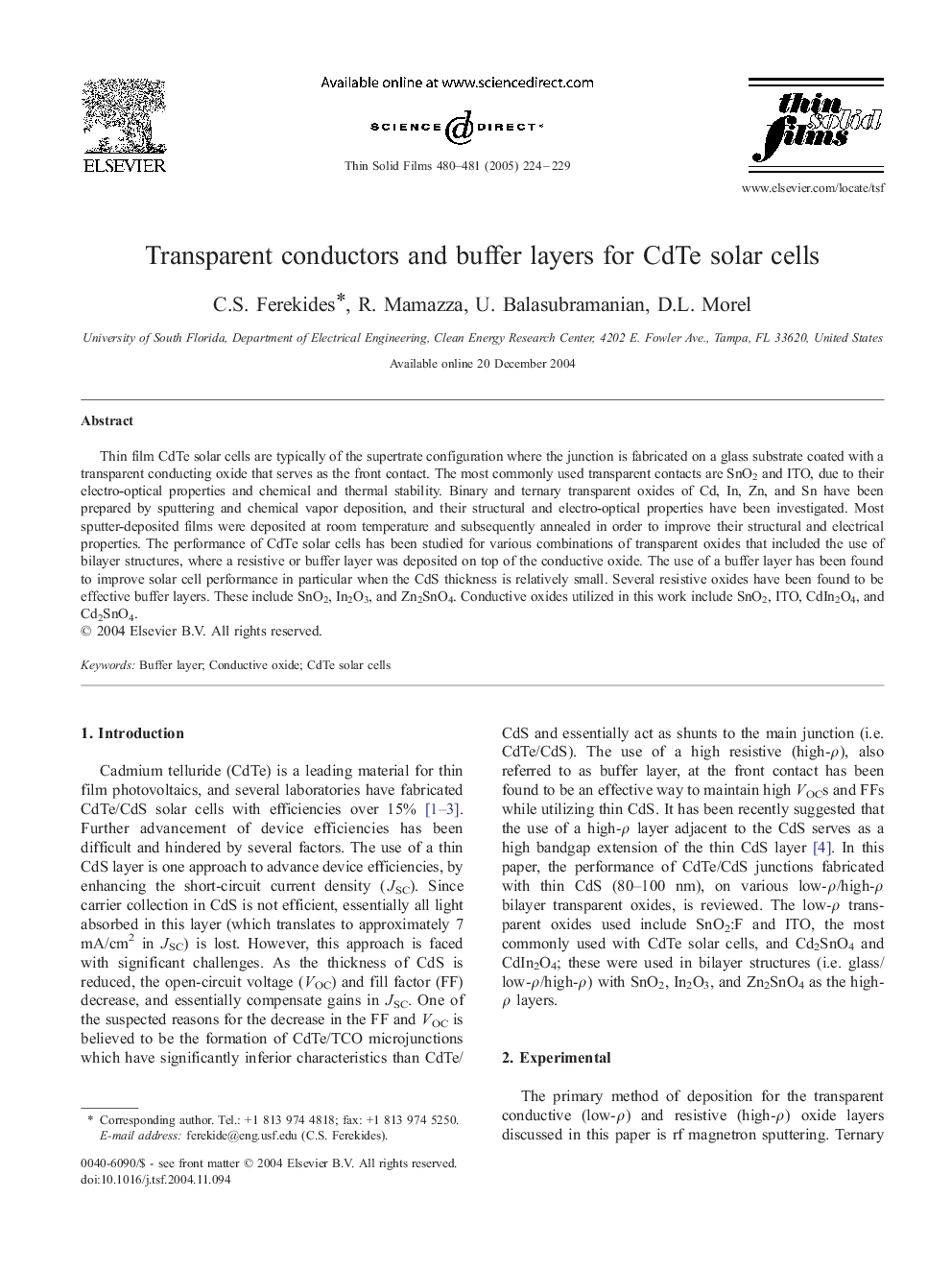| Article ID | Journal | Published Year | Pages | File Type |
|---|---|---|---|---|
| 1674850 | Thin Solid Films | 2005 | 6 Pages |
Thin film CdTe solar cells are typically of the supertrate configuration where the junction is fabricated on a glass substrate coated with a transparent conducting oxide that serves as the front contact. The most commonly used transparent contacts are SnO2 and ITO, due to their electro-optical properties and chemical and thermal stability. Binary and ternary transparent oxides of Cd, In, Zn, and Sn have been prepared by sputtering and chemical vapor deposition, and their structural and electro-optical properties have been investigated. Most sputter-deposited films were deposited at room temperature and subsequently annealed in order to improve their structural and electrical properties. The performance of CdTe solar cells has been studied for various combinations of transparent oxides that included the use of bilayer structures, where a resistive or buffer layer was deposited on top of the conductive oxide. The use of a buffer layer has been found to improve solar cell performance in particular when the CdS thickness is relatively small. Several resistive oxides have been found to be effective buffer layers. These include SnO2, In2O3, and Zn2SnO4. Conductive oxides utilized in this work include SnO2, ITO, CdIn2O4, and Cd2SnO4.
